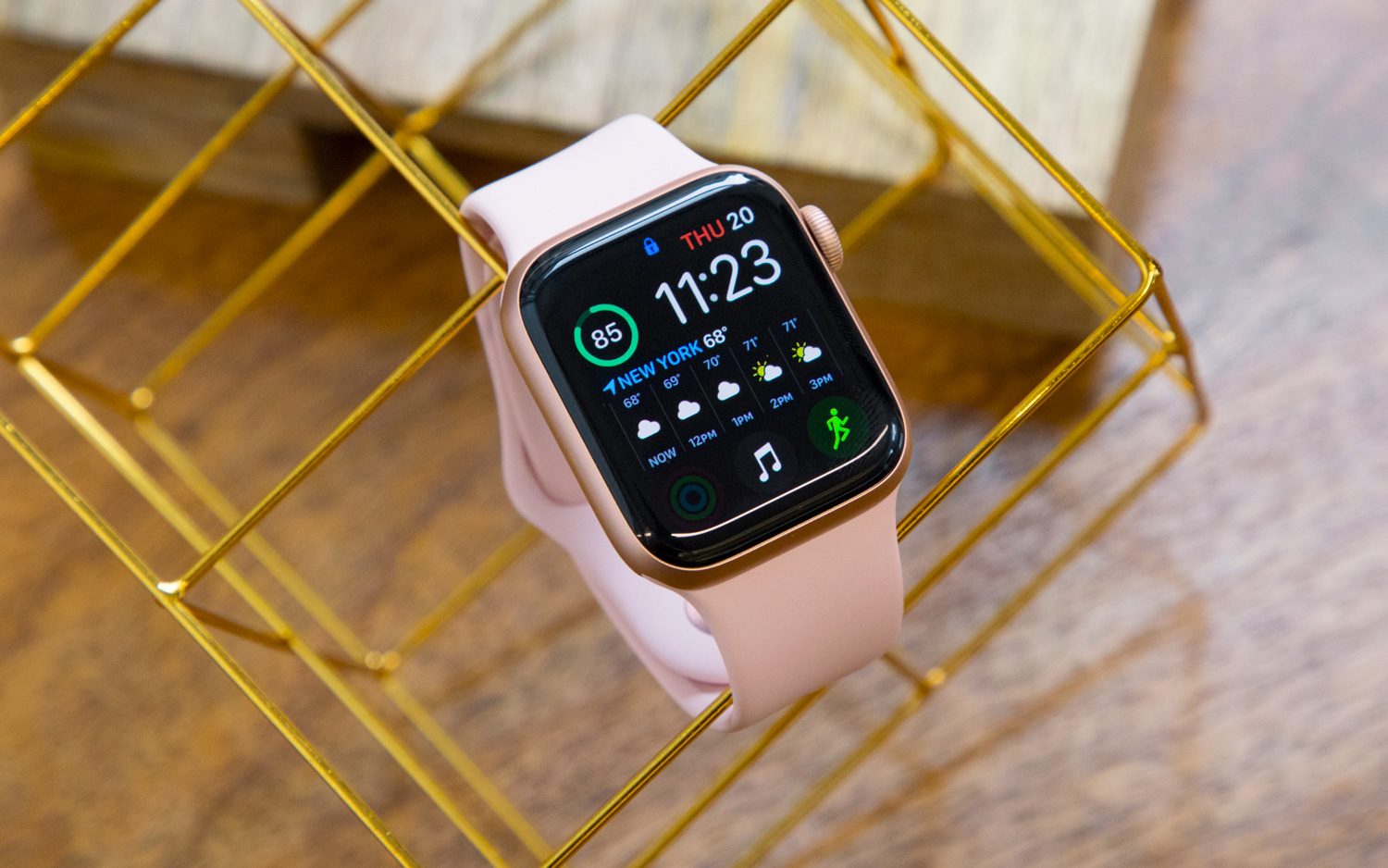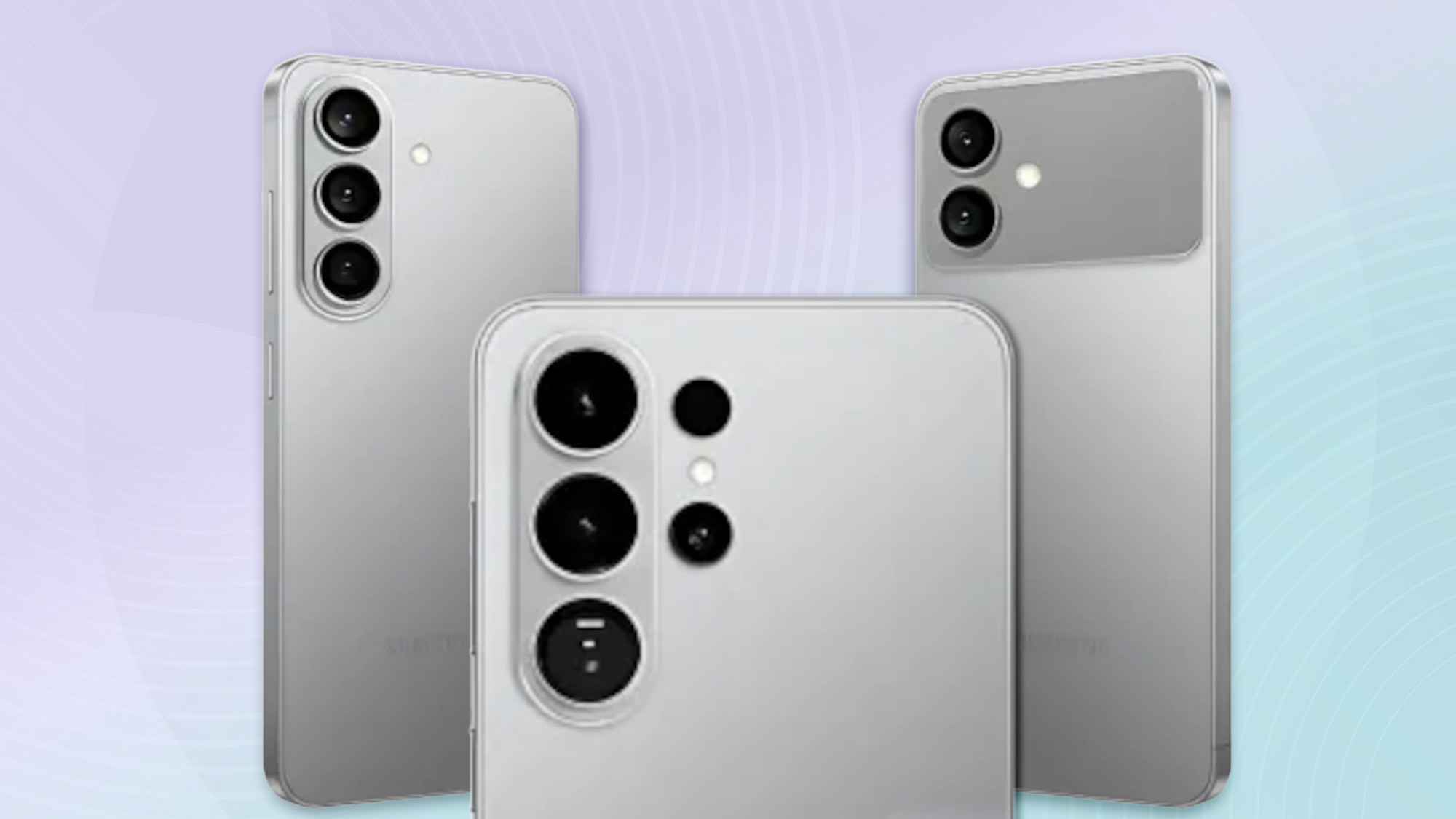Tom's Guide Verdict
Sophisticated health sensors elevate the Apple Watch Series 4 from fun accessory to must-have device.
Pros
- +
Big, beautiful display
- +
Advanced health sensors
- +
Faster processing power
- +
Useful Raise to Speak Siri
Cons
- -
Expensive
Why you can trust Tom's Guide
The Apple Watch Series 4 was once the best smartwatch you could buy.
It has since been eclipsed, first by the Apple Watch 5 and most recently the new Apple Watch 7. But if you find a deal on a refurbished Series 4, it's still worth picking up and will be improved by the watchOS 8 update.
You just won't get all the features of the best Apple Watch models currently available.
When the first Apple Watch launched in 2015, it was more of a pricey iPhone accessory than an essential device. But then Apple realized that the watch’s placement — literally on a person’s body — gave it capabilities the phone could never have. The optical heart rate sensor enabled high heart rate alerts, giving people information they could use to seek medical treatment. The watch’s potential became clear.
Apple doubled down on that promise with the Series 4. The watch ticked the usual upgrade boxes: bigger display, thinner case, faster processor, more advanced sensors. But it’s the Series 4’s health features that brought it closer to fulfilling Apple’s vision of a truly indispensable device.
It’s still not perfect. But it’s oh so close. It’s also oh so expensive: The watch started at $399/£399 for the GPS model, and $499/£499 if you want cellular connectivity. But you still don’t need LTE.
Apple Watch Series 4 display
The first thing you’ll notice about the Series 4 is its face. Apple stripped away the thick bezels surrounding the watch’s display and brought the screen nearly to the edge.
Get instant access to breaking news, the hottest reviews, great deals and helpful tips.
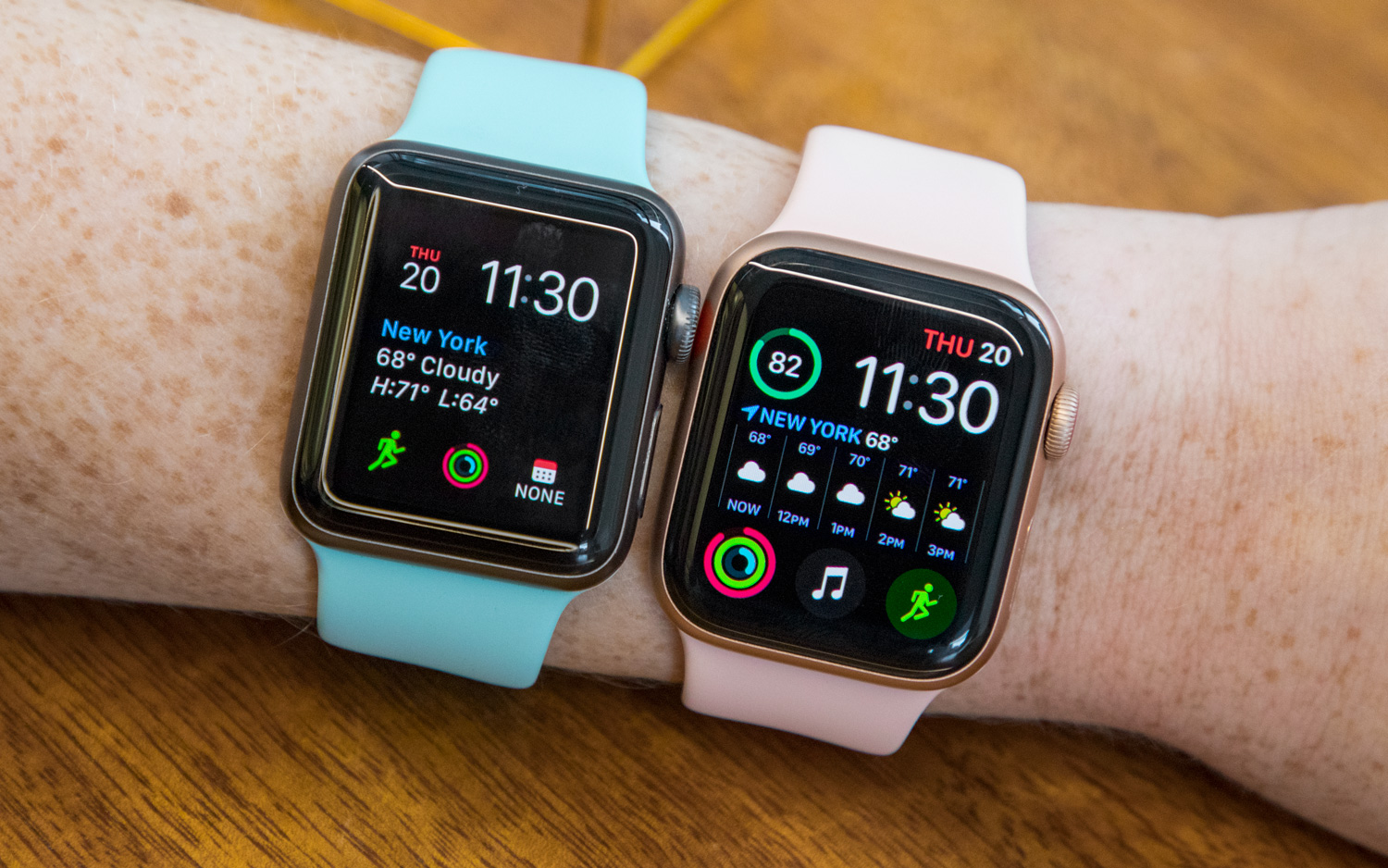
Both Series 4 models are slightly larger than their predecessors (more on that later), and their displays are more than 30 percent larger. That makes a huge difference. The 40mm model’s OLED screen is 394x324, compared to the 38mm Series 3’s 340x272 display, and the 44mm model’s is 448x368 versus the 390x312 panel in the 42mm Series 3. That’s right: The smaller Series 4’s display is bigger than the largest Series 3. This makes every interaction easier.
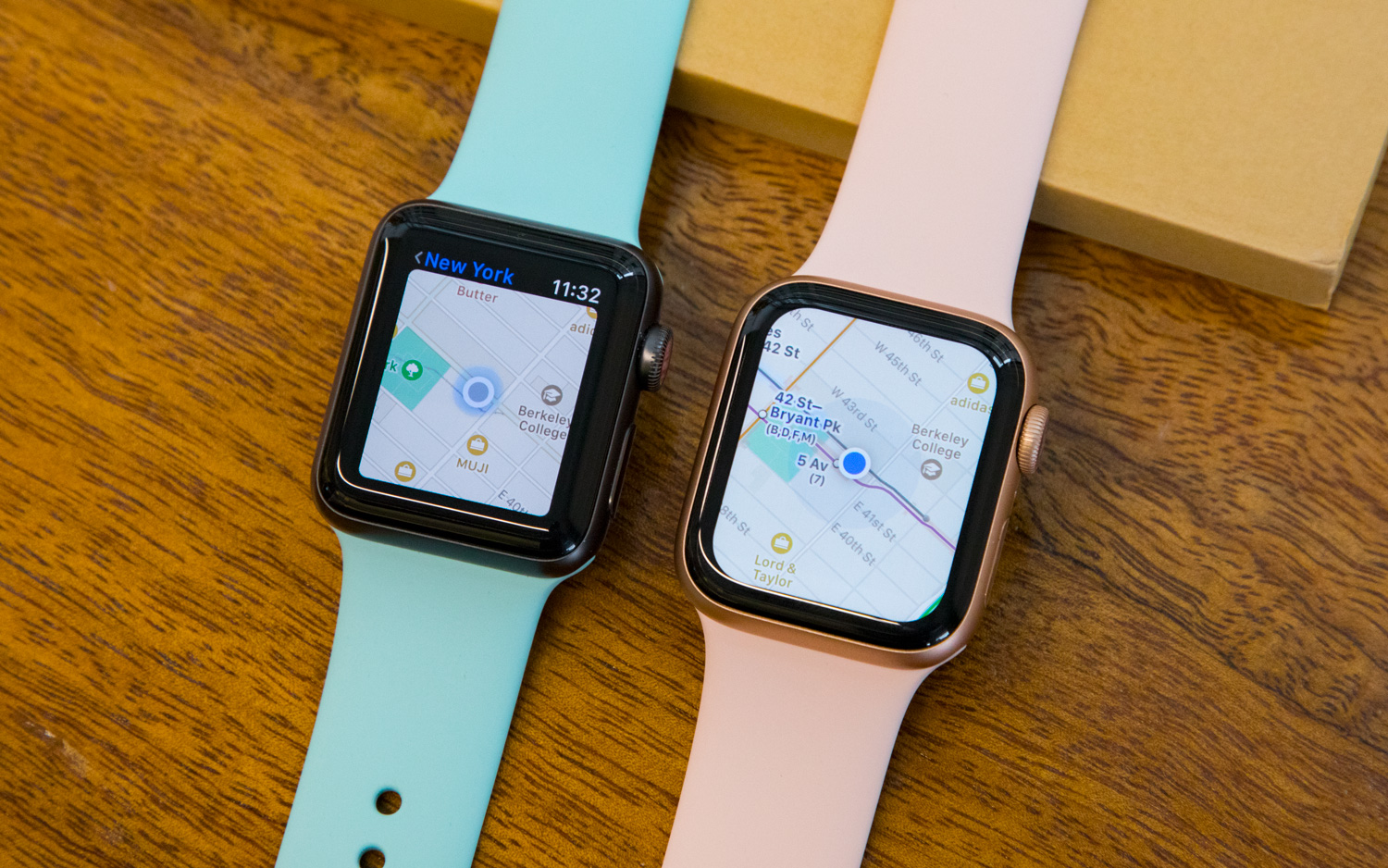
The display brightness hasn’t changed from Series 3 to Series 4 — both versions can hit 1,000 nits — but Apple redesigned the interface to take advantage of all the space on the newer watch’s extra-large screen. Icons are larger and more detailed. It’s easier to read notifications quickly. Even in bright sunlight, I was able to see the five running metrics displayed on-screen during a 3-mile jog without squinting. That makes it seem like the display is brighter, even when it's technically not.
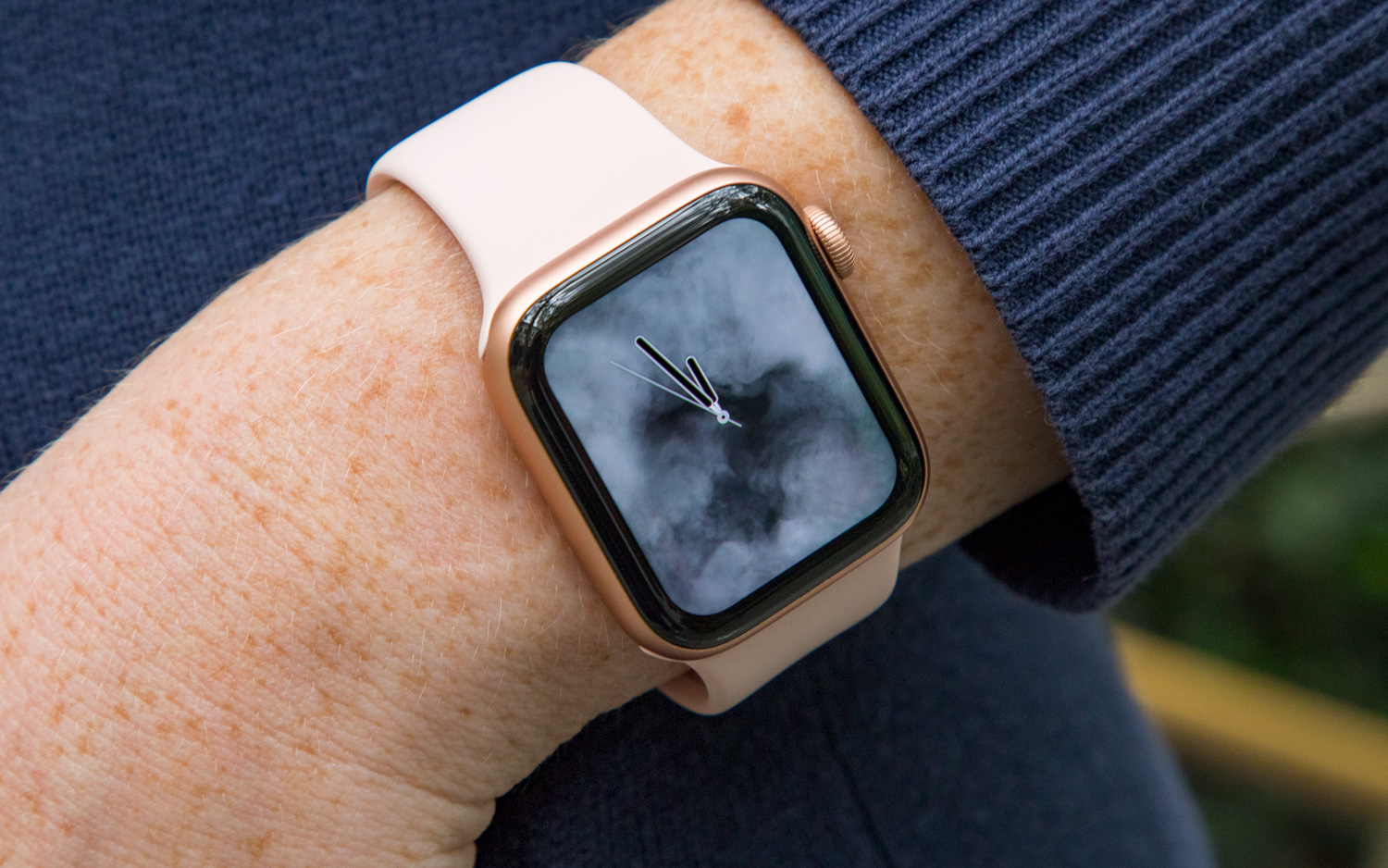
Apple introduced new watch faces with the Series 4 to take advantage of the sizable screen. The company filmed actual vapor, fire, water and liquid metal on a high-speed camera to create the new faces, and the results are stunning. These dynamic faces are also available on the Series 3, but they’re contained to the radius surrounding the dial. On the Series 4, the effects are more dramatic: flames unfurl to lick the sides of the display on one face, and vapor overtakes your wrist like fog rolling in over the Golden Gate Bridge on another.
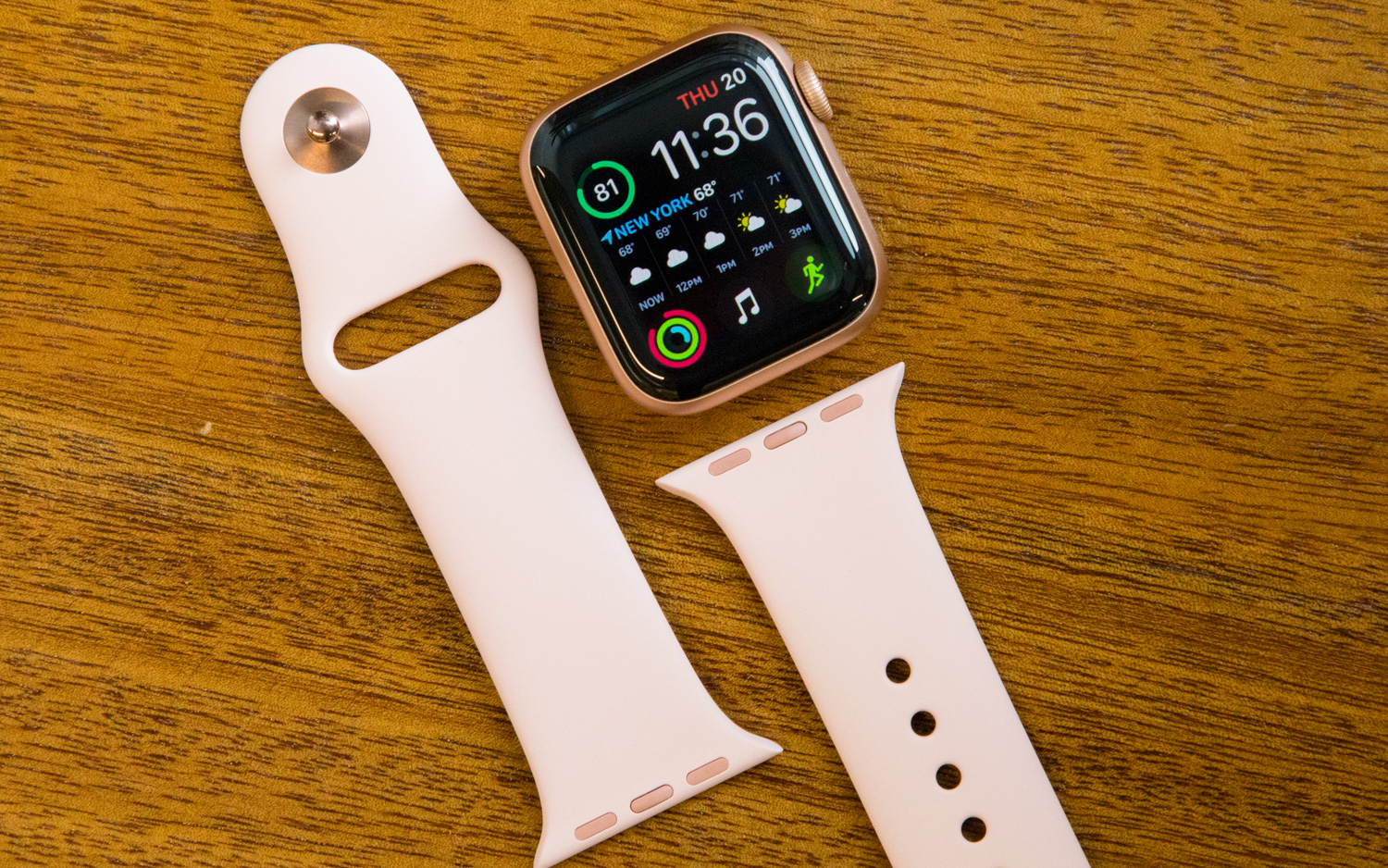
But my most-used new watch face is Infograph Modular, which puts six pieces of information just a glance away. I need instant access to weather data, workout mode and music, alongside the date, time and battery percentage. I also like to keep my Activity rings on my watch face, so I can quickly see how badly I’m crushing the friends I share activity data with. (Just kidding. Mostly.) Another Infograph face stuffs eight complications on the watch face, but I find that’s a little too much for me. I prefer to keep it simple.
Apple Watch Series 4 size
I was sitting in the audience at Apple Park when Apple COO Jeff Williams revealed the Series 4’s two sizes, and I confess that I audibly groaned when I saw the smallest option was now 40mm. Sure, that’s just two millimeters larger than the 38mm, which has been the smaller version in every other generation of Apple Watches. But 2mm can make a big difference on a small wrist.

I tried the watch on in the hands-on area following the announcement, which did little to dissuade me. This watch is too big, I decided. Why did Apple mess with a good thing?

But now that I’ve been living with it for a few days, I’m used to the new size, which isn’t actually all that much bigger — at least, on paper. The 38mm Series 3 case is 38.6mm tall and 33.3mm wide. The Series 4 is 39.8mm tall and 34.4mm wide. As someone who’s worn the 38mm version of each generation of Apple Watch for the last three years, perhaps it’s more of psychological change than an actual one.
Of course, I’ve also polled coworkers, friends, my husband: “Are you sure this doesn’t look like a computer on my wrist?”
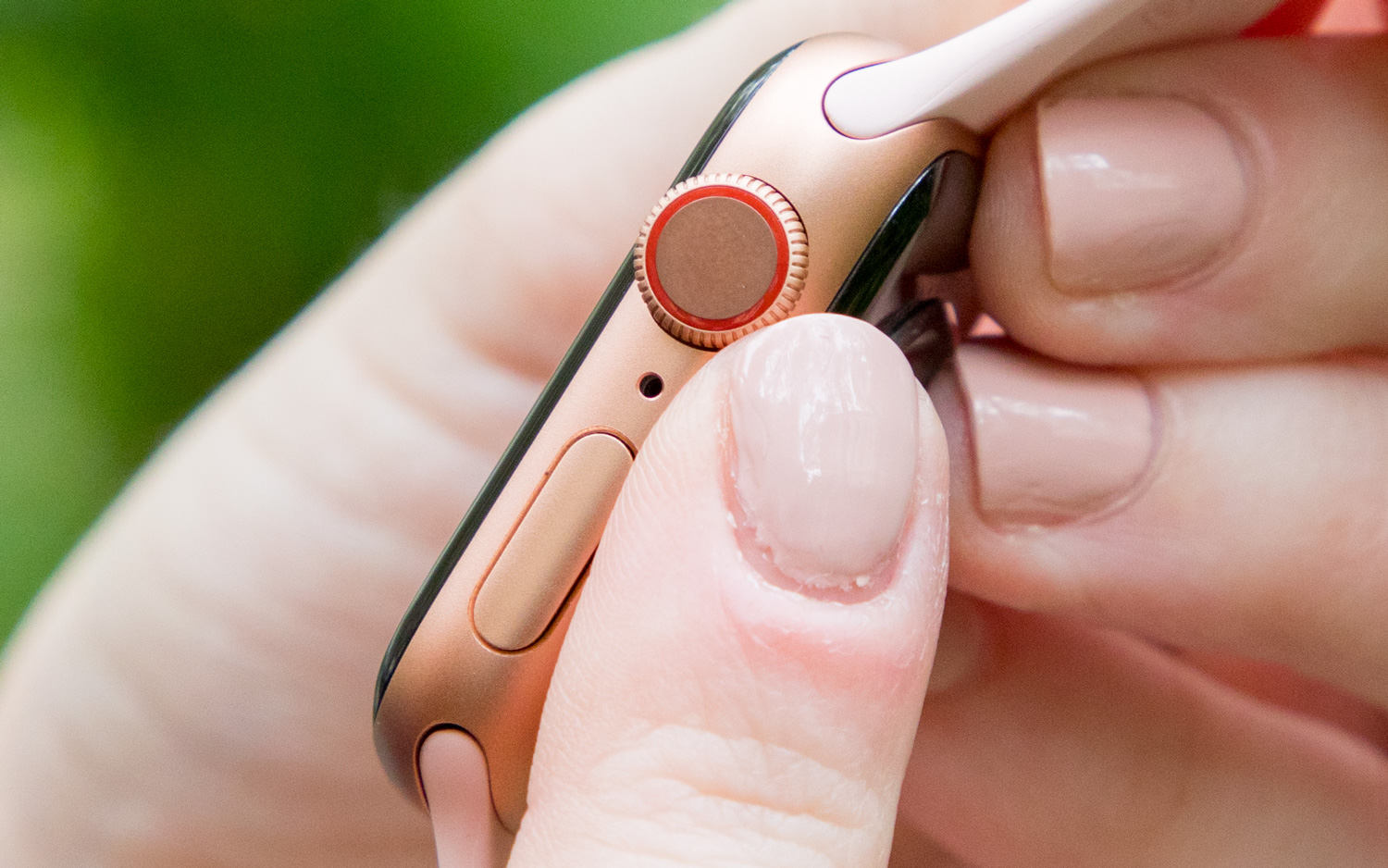
They say it looks pretty much the same as the old one. My husband remarked on the new watch’s slimmer profile, which does make a big difference in look and feel. The Series 3 was noticeably thicker than past generations, and the Series 4 strips away that bulk.
The larger size is a small trade-off for the brilliant display.
Apple Watch Series 4 health features
The Series 4 is a significant step toward making the Apple Watch a must-have device. Apple received clearance from the U.S. Food and Drug Administration for two game-changing features: an ECG app capable of taking electrocardiograms on the go, and an atrial fibrillation feature that alerts you when you experience five irregular heart rhythms. The atrial fibrillation feature will be available on any watch running watchOS 5 or later.
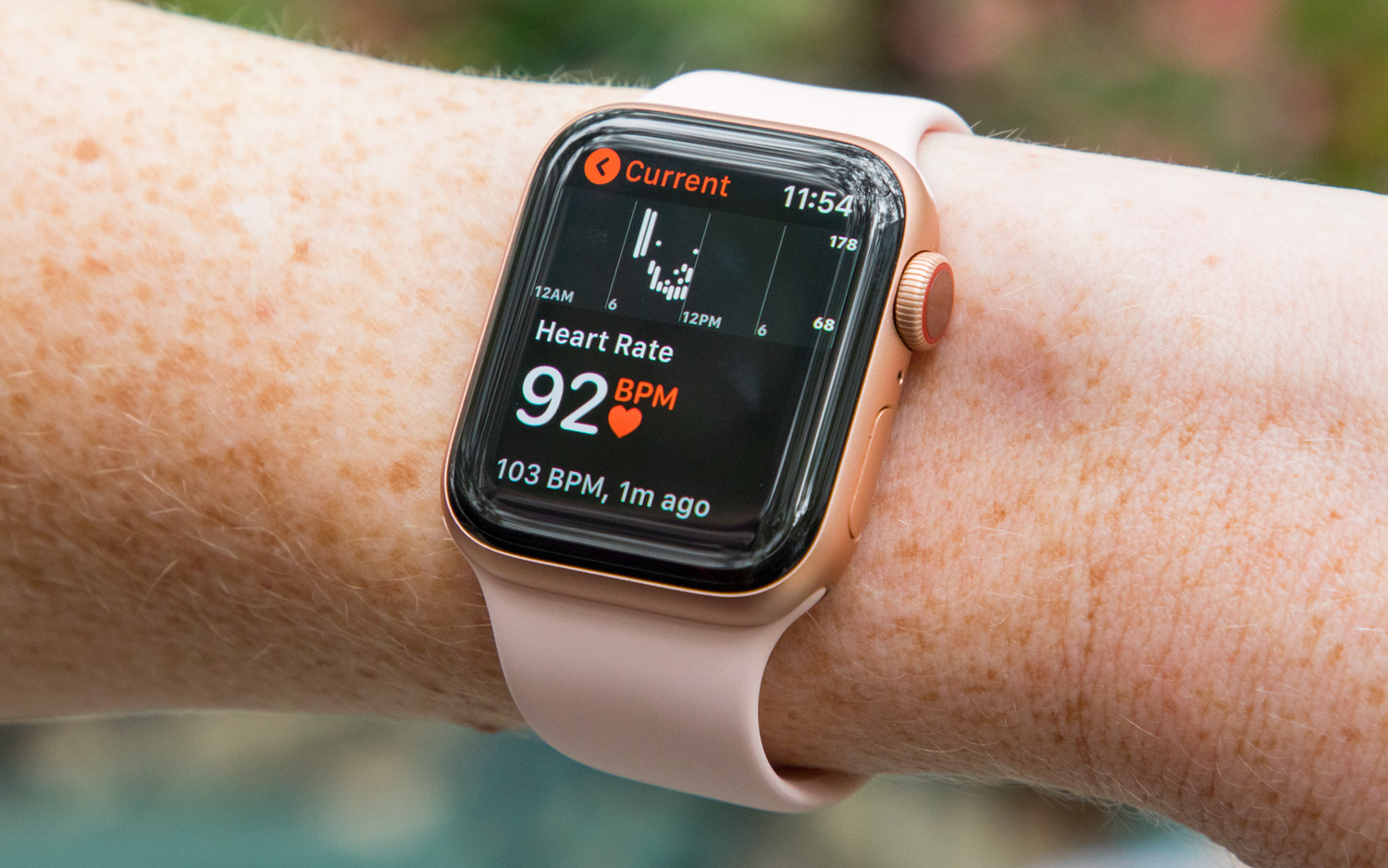
The ECG app is exclusive to the Series 4, because it relies on the electrodes running through the sapphire crystal-and-ceramic back and Digital Crown to take the reading.
Some cardiologists are concerned that the ECG app could deliver false positives that will send people to the hospital unnecessarily, but only time and peer-reviewed data will tell. I’ve spoken to people whose Apple Watches alerted them to major health issues they would have otherwise never known they had.
MORE: The Doctor on Your Wrist: How Smartwatches Are Saving Lives
Receiving actionable notifications that tell you if your heart rate is too high or low, or your heart rhythm is irregular, is huge. Having months of heart data stored in an app to show your doctor will be incredibly beneficial to people who would otherwise avoid getting a checkup (or who seek out treatment only to be told that nothing is wrong).

The irregular heart rhythm feature and ECG app were not available to test at launch, but rolled out in the watchOS 5.1.2 update. I tested the watch ECG against a full 12-lead EKG in a hospital setting, and found it to be accurate. For more on the ECG app and how to use it, check out our hands-on. I also activated a new low heart rate alert (which is similar to the high heart rate alert that Apple rolled out in watchOS 4), but so far, so good.
Another critical health feature, fall detection, is available to use right away. Hopefully, you won’t need to. The Series 4 sports an upgrade accelerometer and gyroscope that can sense when you fall forward or backward and can gauge impact to determine if you’ve fallen unintentionally. Don’t try to fool it with a trust fall; it won’t work. I, thankfully, managed not to fall while testing the watch, so I assume that it works as advertised. (Sorry, not trying to injure myself on the job.)
Apple Watch Series 4 performance
The Apple Watch has improved by an order of magnitude when it comes to performance. Just three years ago, the Series 0 relied on your iPhone for every interaction and took ages to load anything. The Series 4 is blazing fast by comparison, thanks to the fourth-gen S4 watch processor.
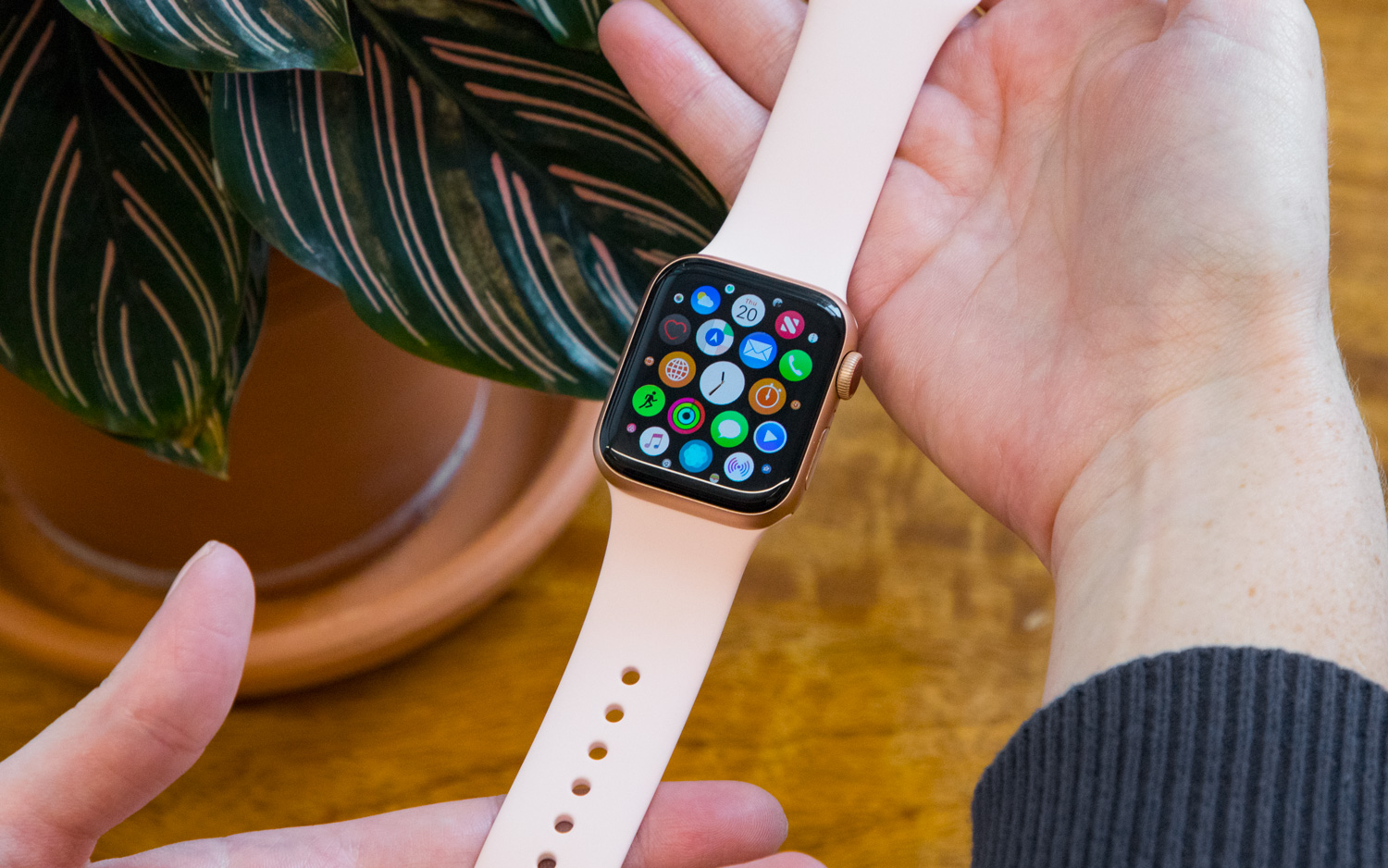
Launching into a run happens almost instantaneously (not including the three-second countdown to prepare). Downloading emails in the watch Mail app takes seconds, just like on my iPhone. I pulled up the watch’s Maps app and selected the current location on a Series 3 running watchOS 5 and the new Series 4 side-by-side. The Series 3 lagged compared to the Series 4.
Both models are lightning quick compared to smartwatches running on Google’s Wear OS and its Qualcomm Snapdragon 2100 chip. That could soon change with the new Snapdragon 3100 CPU, but Apple is still far ahead when it comes to smartwatch processing power.
Apple Watch Series 4 Siri integration
The Apple Watch has always had Siri around, but you had to press on the Digital Crown, which was slow to summon the assistant, or issue a “Hey Siri” command, which is a little weird when you’re out in public. The Series 4 now lets you call upon Siri just by raising your wrist and speaking. That’s it. Just start talking.
The faster processor makes this process relatively quick (almost faster than on my iPhone). Siri is still Siri, so you can’t ask anything too complicated. But raising my wrist and having Siri tell me the weather forecast or sending off a text to my husband is exactly the kind of interaction I want to have with a smartwatch: quick and easy.
MORE: Smartwatch buying guide
The new watch’s speaker is 50 percent louder than the past generation, and it’s noticeable. My Siri is a British male, and I nearly jumped out of my chair when he first answered a question for me from the watch.
Apple Watch Series 4 fitness and music features
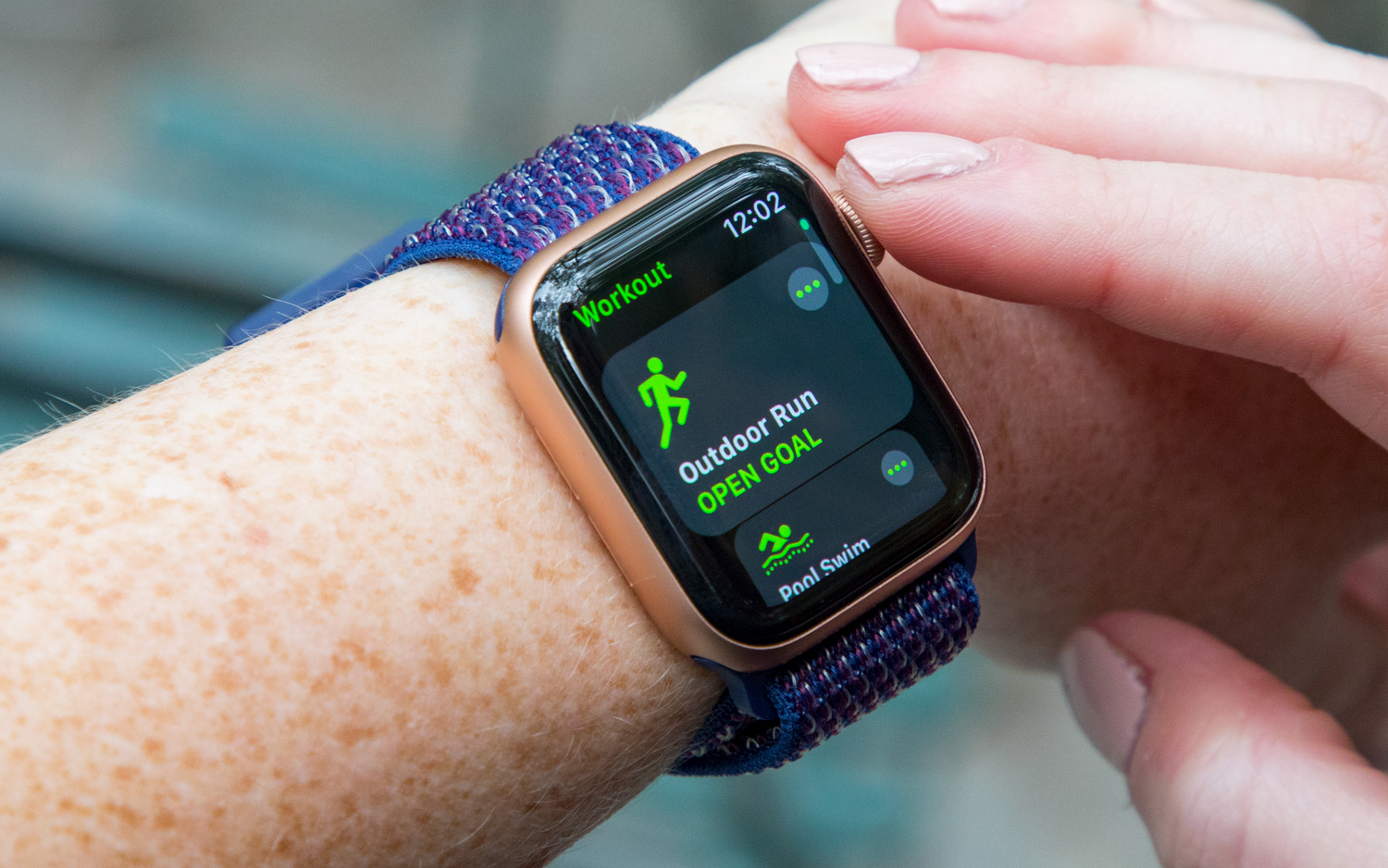
The automatic workout detection is particularly useful to me, because I occasionally forget to end a run or start a spinning workout and then end up with inaccurate data (or no data at all). When I started running, the watch vibrated after three minutes to ask if I wanted to launch a running workout. Then it gave me credit for the three minutes and miles that I had missed.
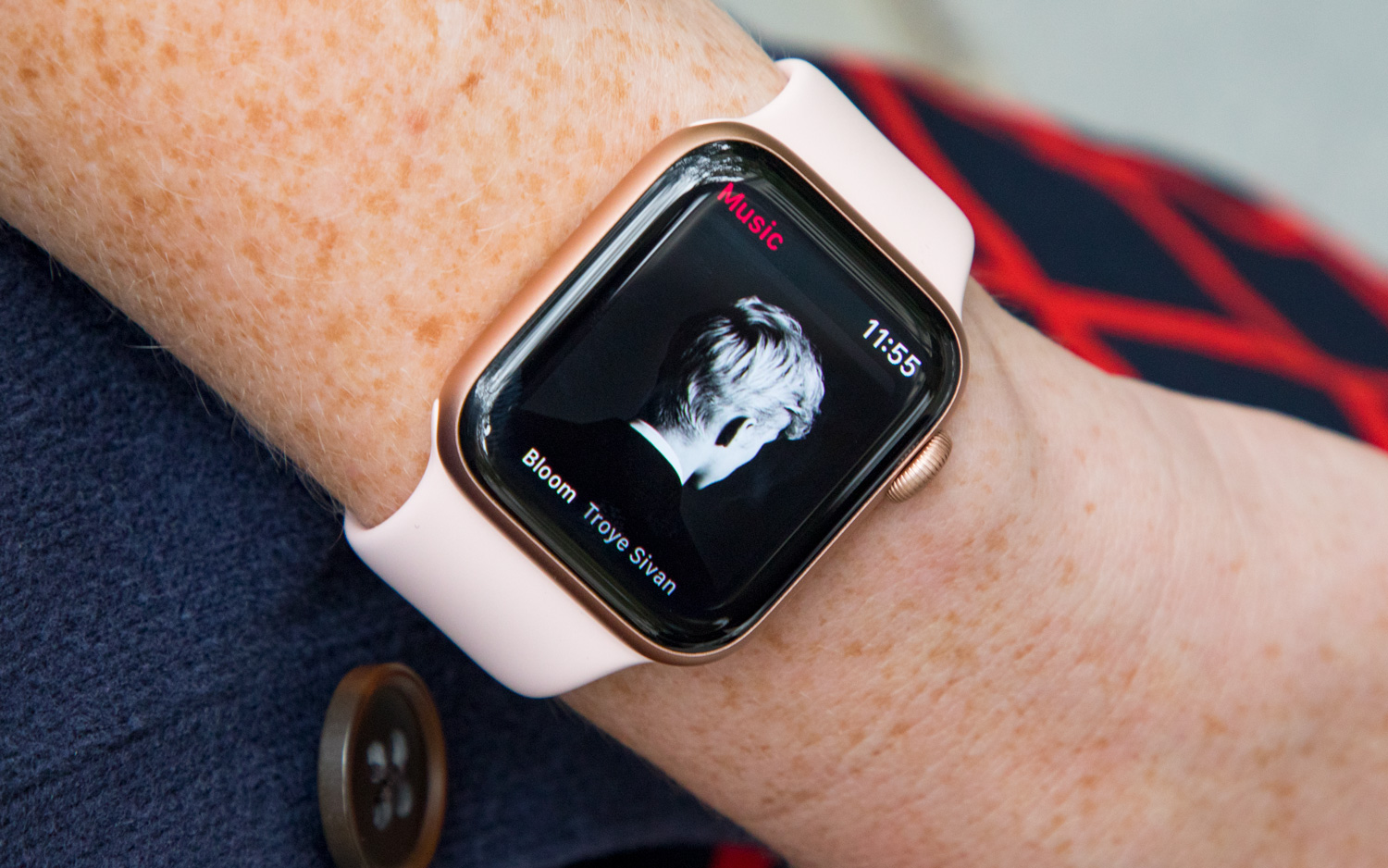
I also love support for offline podcast syncing, which works in Apple Podcasts or in third-party apps. I subscribe to podcasts in Overcast, which automatically syncs episodes to my watch and helpfully tells me which ones are available to listen to only on my phone if I’ve interrupted a syncing session.
For now, Apple Music is still the only streaming app that lets you save songs offline on your watch. But in November, Spotify launched a watch app that will support offline music playback down the line. This could convince Spotify subscribers to buy an Apple Watch.
Apple Watch Series 4 GPS or Cellular
I thought cellular connectivity would elevate the Apple Watch to must-have status, but then I realized that I will never not have my iPhone with me. I need it for too many things, not least of which because scrolling through Instagram on a watch isn’t a pleasing experience to the eyes.
Apple has improved the cellular reception on the Series 4, so you’ll get better service outside of major metropolitan areas.
But now that the price of a brand new Apple Watch has increased to $399/£399, and an LTE model starts at $499/£499 (not including a data plan) the price just seems too high for what you get. I recommend the GPS model.

Apple Watch Series 4 battery life
The Apple Watch Series 4 still lasts about 24 hours on a charge, the same as every model preceding it. Apple aims to deliver 18 hours on a charge, but it can easily cruise through an entire day. That’s slightly better than my iPhone, which sometimes needs to be charged before I go out in the evening, but falls short of the fitness-focused Fitbit Versa and Samsung’s Galaxy Watch, which both last four days on a charge.
Apple did bump up the battery size in the Series 4, according to an iFixIt teardown of the 40mm watch. The new battery has slightly increased capacity over the battery in the 38mm Series 3, but that doesn't deliver a meaningful increase in battery life.
Early one morning, I strapped the 40mm Series 4 to my wrist and hit the pavement for a 3-mile run. By 6:45 p.m., after a day of light app usage, checking email on my commute, sending messages and asking Siri various questions, it had dwindled to just below 50 percent.
You can wear the watch to sleep if you want to use a third-party sleep-tracking app, but my dream is for Apple to both build its own sleep app and improve battery life so I can see my sleep cycles without having to charge the watch as soon as I wake up.
Apple Watch Series 4 verdict
The Series 4 isn’t perfect. The Apple Watch has been coasting on 18-hour battery life since it launched, which makes it less than ideal for tracking sleep, and that hasn’t changed with the Series 4. And many people tell me they would love an Apple Watch but are put off by the slightly rounded square design that Apple has stuck with since the beginning.
As the iFixIt teardown reveals, the Series 4 has been entirely redesigned from the inside out. If you're using a Series 0, an upgrade is a no-brainer.
Since the day I bought the first Apple Watch, I’ve believed the reason for its existence is health. Notifications are useful, and the watch can be a stylish accessory, but those are secondary to the information it can give us about our bodies, right now and in the future. Apple is only now unlocking that potential with actionable alerts about heart rate and rhythm. Maybe you don’t need atrial fibrillation alerts or instantly accessible ECG readings. But imagine the possibilities.
Credit: Tom's Guide
Caitlin is a Senior editor for Gizmodo. She has also worked on Tom's Guide, Macworld, PCWorld and the Las Vegas Review-Journal. When she's not testing out the latest devices, you can find her running around the streets of Los Angeles, putting in morning miles or searching for the best tacos.
-
leokaiwong It's quite likely an Apple Watch without the LTE will sell faster in the used Apple Watch market.Reply -
dennis_clardy That is very strange you are only seeing 18-24 hours per battery charge. My series 1 could almost squeak out 48 hours and my series 3 does it easily. I will eventually upgrade, but will wait until the jury is back in on the ECG. Great review!Reply
